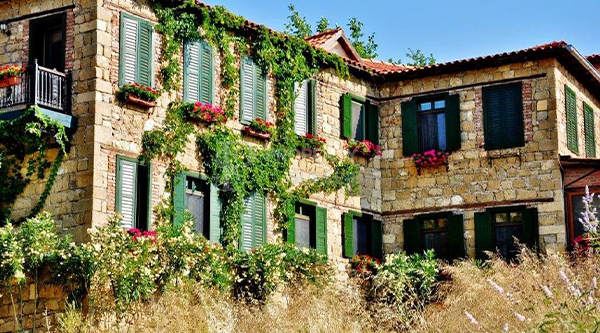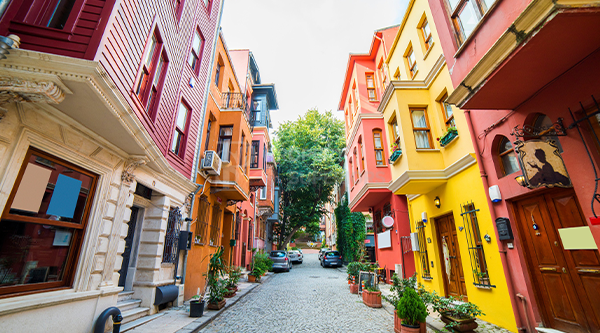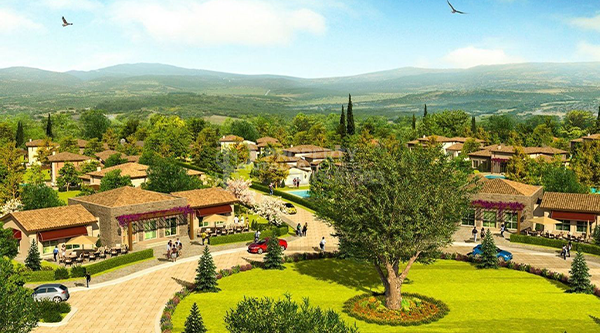
Residential styles in Istanbul offer fascinating insights not only into Turkey's largest city, but also how architectural trends and external influences shape the urban landscape. Long-term tourists and residents have seen dramatic changes over the past decade as Turkey's real estate market has modernized, but these changes have long since occurred.
Istanbul Lifestyle: A Boom for Mid-Sized Apartments
Sibel Bozdog says Istanbul's residential architecture and cityscape changed in the 1950s and 60s, when mass immigration from rural Anatolia boosted the population to more than one million and sparked a trend for mid-sized apartment buildings .
Due to the demand for housing, shantytowns (gecekondu) sprung up on the outskirts of the city, and for those with the money to plan, gated communities became homes for members of the upper class.
The 1950s to 1980s were a pivotal time that changed the way the locals lived, but the more exciting style that attracts tourists predates this era, dating back to the Ottoman era. If you're looking to buy an older property in Istanbul, the city's entire Bosphorus coast offers plenty of options.

Old wooden houses in Istanbul
Skilled craftsmen have been building log homes since the 16th century. Most are two or three stories high with storage areas on the ground floor. Toilets are outside, and residents eat and sleep in multipurpose rooms upstairs.
Some historians say the use of the large space for multiple purposes is due to nomadic Turkish tribes whose cultural influence is also reflected in the ancient and 100% authentic Turkish rugs.
However, the use of wood for housing was banned after World War I due to the enormous fire risk of wood. This makes wooden houses very rare in Istanbul. Neglected homes before the 19th century became unsafe over time and were demolished, leaving only a few intact.
UNESCO took note and declared them a global cultural heritage in 1985. She therefore focused her attention on the Zeyrek and Süleymaniye neighbourhoods, in the Fatih district. Constructed of oak and pine, the main feature of these adjacent properties are the exedras, the semicircular seating areas on the front facades.
For five years, from 1999 to 2004, Unesco, together with official Turkish organizations, tried to restore them, and in 2006 Turkey established KUDEB, an organization specializing in traditional building techniques that is said to have restored 55 houses to restored to its former glory.
But in 2010, World Bulletin published a report that said homes in Sulaymaniyah were under threat. Martin Bachman of the German Institute of Archaeology says only 250 wooden houses remain, although they are the most famous style of housing in Ottoman-era Istanbul.
Near the Sultanahmet district, Sogukcesme Street often attracts curious tourists who come to see old 4- to 10-bedroom houses restored by Celik Gulersoy, the curator of Turkish antiquities. Three are now open, including Ayasofya Pansiyonlari Hotel.
The colored houses of Fener and Balat
In 2003, the European Union allocated 7 million euros to protect houses in the Balat and Fener districts, but later the Zeyrek and Süleymaniye districts were also included.
Balat and Fener have three-story stone buildings and also have exedras. Tourists looking to explore neighborhoods outside of the touristy areas often sign up for street walking tours of pre-Greek Orthodox and old Jewish quarters that appear in travel magazines.
Another popular place to see colorful Ottoman houses is the Kuzguncuk neighborhood on the Asian side. These houses have appeared in many Turkish soap operas.
Villa Yali Bosphorus
Built and owned by elite members of Ottoman society, a short ferry ride will take you to the wooden yali mansions on the shores of the Bosphorus. These beachfront villas are not only luxurious and high-quality, but also have a women's section and a men's section for guests to enjoy privately. Their historical value makes them the most expensive properties in Türkiye. Read more about Bosphorus villas in Istanbul.

Today's lifestyle
Skyscraper living is the latest trend in Istanbul, especially on the European side, offering communal facilities such as indoor/outdoor pools, gyms, landscaped gardens and 24-hour security.
With many new developments emerging in outlying areas such as Buyukcekmece and Esenyurt, lower prices than central areas can easily attract international buyers. Therefore, it is the most popular place in Türkiye to sell foreign homes.
Tip: To see photos of the old Istanbul lifestyle, Ara Güler's work is mesmerizing. Nicknamed "The Eye of Istanbul," he photographed the city for more than 70 years until his death in 2018. Some of his works are now exhibited in the Sisli Ara Güler Museum.
Related posts:
The Turkish official gazette published on Tuesday, December 12, a Republican decision issued by the presidency of the Republic of Turkey and Turkish President "Recep Tayyip Erdogan" and bearing the number 32397 regarding making some amendments to the conditions for...
The first day of last September witnessed the implementation of a new law imposing financial fines on real estate owners who impose exorbitant rents on tenants in Turkey, as disputes in recent years between landlords and tenants of real estate...




 New provisions for obtaining Turkish citizenship through real estate ownership
New provisions for obtaining Turkish citizenship through real estate ownership
 Turkish Real Estate Rental Law 2024
Turkish Real Estate Rental Law 2024
 Ways to obtain Turkish citizenship through investment 2024
Ways to obtain Turkish citizenship through investment 2024
 How to choose an ideal apartment in Turkiye?
How to choose an ideal apartment in Turkiye?
 Turkish passport... Extraction method and fees 2024
Turkish passport... Extraction method and fees 2024
